Check BMW Coolant Level
Regularly checking the coolant level in your BMW is an important part of maintaining the health and longevity of your vehicle. Coolant, also known as antifreeze, is a liquid that helps regulate your engine’s temperature and prevent it from overheating. Low coolant levels can lead to engine damage, so it’s essential to keep an eye on the coolant level and top it off when necessary. In this article, we will guide you through checking the coolant level in your BMW, including where to locate the coolant reservoir and how to check the level properly. By following these steps, you can ensure that your BMW is running at optimal performance and avoid costly repairs down the road.
Before checking the BMW coolant level, allow the engine to cool down. Once the engine is cool, locate the coolant expansion tank, which is usually on the left side of the engine bay. You can refer to your vehicle’s owner’s manual for more specific information on the location of the coolant reservoir or check some of the examples below. Once you have located the reservoir, you can remove the cap and check the coolant level. If the BMW engine coolant level is low or you can’t see the floating device, add the recommended BMW coolant.
BMW’s low coolant warning typically comes on due to the low coolant level in the engine bay’s expansion tank. Checking the level on a BMW is easy and takes less than five minutes. It is crucial to follow the correct procedure to avoid injuries and get an accurate reading.
Symptoms

- Engine coolant level light on
- Message on iDrive stating Low engine coolant level
- Engine Overheats
- Coolant warning on, then off after driving
- Engine coolant level too low
- Message: Risk of engine damage! Top up the coolant at the earliest opportunity; see the owner’s handbook. Caution: Risk of scalding!
How to Check BMW Engine Coolant Level
Follow these easy steps to check the coolant level on any BMW. For this procedure, you will need OEM BMW Engine Coolant, as recommended in your owner’s manual, mixed at 50/50.
- Park the BMW in a safe location and set the parking brakes.

- Allow the engine to cool down. Ensure the engine is cooled down before removing the cap from your coolant reservoir, or risk getting burned.
- Open the hood. Pull the hood release under the dash twice.

- Locate the coolant expansion tank in the engine bay. As you open the hood, look to the left of the engine bay. This is the typical location of the coolant expansion reservoir. Some BMW models, such as the 3-series, have the coolant expansion reservoir on the engine bay’s right side.
Remove the coolant reservoir cap. Turn it slowly counterclockwise. It will allow residual pressure to be released without blowing off the cap.

Determine the coolant fluid level. There are two different float designs. The red float may have two balls, one indicating the low level and the other the full level. The level is full when the bottom of the float reaches flush with the top of the cap.

- Add OEM BMW Engine Coolant mixed at 50/50. If the float is down, you need to add coolant. If the float is sticking up, your BMW coolant level is full. In other words, the BMW coolant level is correct if the red float is aligned with the top edge of the filler opening. A schematic diagram is stamped on top of the coolant reservoir, illustrating the minimum and maximum levels. Remember, the level reading should be performed on a cooled-down engine for proper measurement.
What kind of coolant does BMW use?
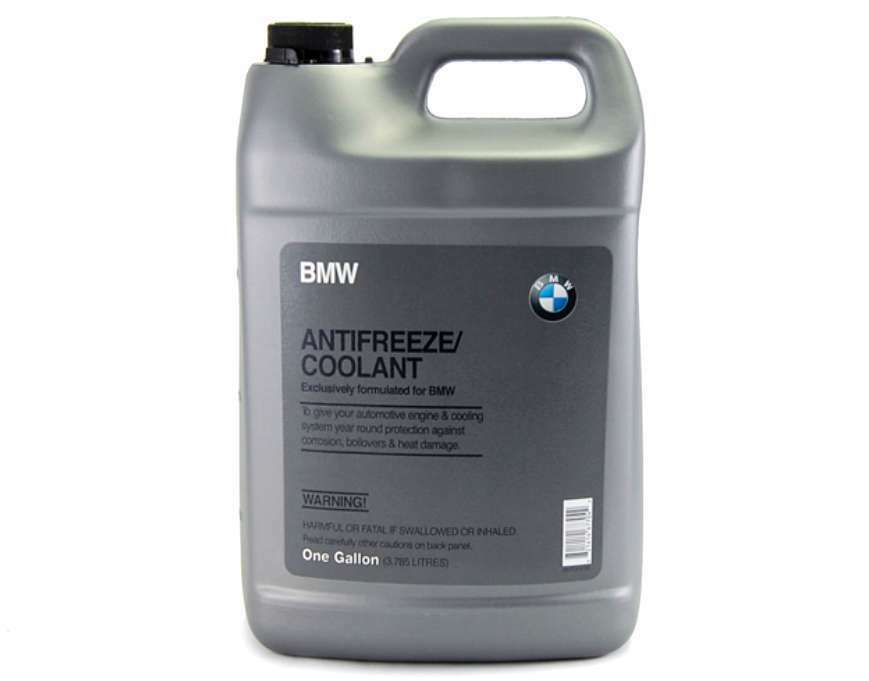
BMW typically uses a type of coolant called “long-life coolant” in its vehicles. Long-life coolant is a specially formulated antifreeze designed to last up to 5 years or 150,000 miles, whichever comes first, without needing to be replaced. This type of coolant is a mixture of water and various chemicals, including ethylene glycol, which helps lower the liquid’s freezing point and prevent it from freezing in cold temperatures. Additionally, long-life coolant contains corrosion inhibitors and other additives to help protect the engine and cooling system from rust and other forms of damage.
It’s important to note that checking the owner’s manual of your specific BMW model and year is always recommended. Some models may have different coolant recommendations based on the region in which they are sold and manufactured.
The most commonly used BMW engine coolant (PN: 82141467704) or a coolant that meets the requirements listed in your owner’s manual. BMWs have specific coolant requirements to prevent buildup and corrosion of aluminum components; therefore, they do not use off-the-shelf antifreeze without checking compatibility.
Helpful Tips
- The cap may not be holding the pressure and could be leaking coolant. Replace the cap. Also, clean the cap, as a buildup of solids can prevent the rubber from sealing the system and cause a leak.
- Typically, you don’t need to add more than one quart/liter to top off the system. To make the float move from the minimum level to the maximum, you need less than a quart of coolant.
- If you add more than one quart, you may have a coolant leak. If you constantly add coolant to your BMW or add more than one gallon of antifreeze, you may have a major coolant leak or a serious engine problem, such as a blown head gasket.
- BMW uses a closed pressurized coolant system with an expansion tank. This system operates differently than most coolant systems, which have an overflow reservoir.
- Always check the BMW coolant level when the car is cold and the engine is turned off. The coolant system pressurizes and will still be hot if you remove the cap right after the engine runs.
- The hot coolant can cause injuries. To avoid getting burned, let the engine cool down for at least thirty minutes. If you are stuck on the side of the road and have no choice but to add coolant, remove the expansion cap very slowly.
- Keep your face and body as far away as you can.
- Allowing the BMW to idle and setting the heat on allows the air pockets in the cooling system to escape. If you suspect an air pocket in the engine and use this method, recheck the coolant level by turning the engine off. This will ensure you didn’t overfill the system.
- If your BMW is under warranty, take your car to the dealer, and they will top off the cooling system free of charge.
The coolant level is full, but I still get a low coolant warning light.
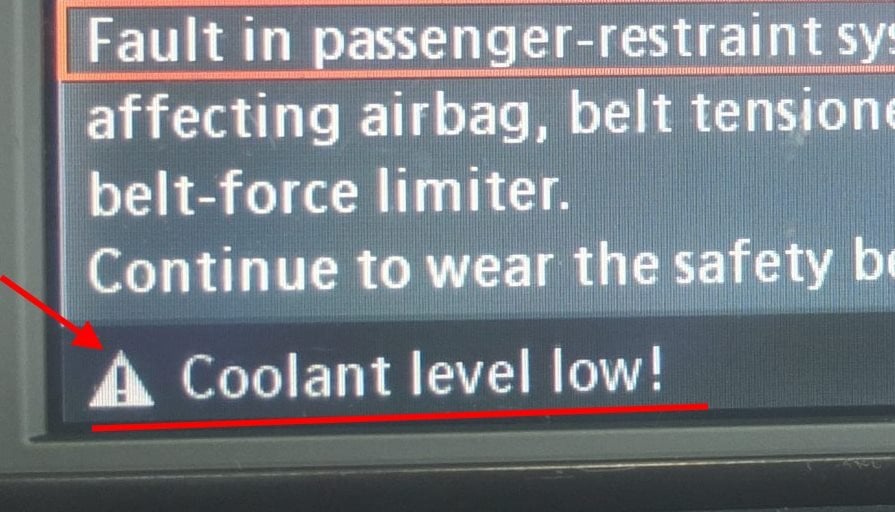
It is possible to get a “Coolant Level Too Low” warning even if you add coolant. If your BMW has a coolant level sensor, you must first inspect it. There may be an electrical issue with the sensor that triggers the warning message.
If your car is extremely low in coolant, you may get the low coolant warning light even if you add coolant. The car was either neglected or extremely low in coolant. Run the car for one minute and recheck the coolant level. It is possible that you need to add more coolant.
Is the BMW coolant warning message on even though the coolant level is correct? This may be caused by outside temperature fluctuations or when using certain incompatible aftermarket coolant brands. Other possibilities include a defective water pump, a bad engine temperature sensor, or a bad coolant level sensor.
Older BMWs had a translucent coolant reservoir with a line showing high and low levels. Back then, it wasn’t necessary to remove the cap to get a coolant reading. BMW redesigned the cooling system, and now they use an expansion tank. Instead of the transparent tank, they implement the float design ( the rod that pops up).
Can you use other coolants on BMW?
Mixing BMW coolant with non-BMW coolant is a bad idea. It is generally not recommended to use a different type of coolant (antifreeze) on your BMW other than the one specified by the manufacturer. BMW vehicles are designed to work with a specific type of coolant, and using a different type can cause issues with the cooling system and potentially damage the engine.
Use the OEM BMW engine cooler recommended in your owner’s manual and mix it 50/50.
BMW Coolant Alternatives
Not all aftermarket coolants are compatible with BMW cars. Here are a few coolant/antifreeze brands that are compatible with BMW:
- Prestone Extended Life 5-150
- Valvoline Zerex G-05
- Peake Green Coolant
Regardless of the coolant brand you use, including OEM BMW Coolant, always pre-mix it at 50% coolant and 50% water. Full-strength coolant is not mixed; you must mix it yourself before adding it to the cooling system. Use distilled water instead of tap water.
Tap water will work, but it is not recommended because it can introduce impurities and minerals and cause corrosion to the cooling system. You do not need any extra additives. The 50/50 mixture ratio can be used year-round.
Should I drive my BMW with the coolant warning light on?
Driving your BMW with the coolant warning light on is not recommended. The light indicates a problem with the coolant system, which should be addressed as soon as possible to prevent damage to the engine.
Various issues, such as low coolant levels, a leak in the coolant system, or a problem with the coolant temperature sensor, can trigger the coolant warning light. If the light is on, it is important to stop the car as soon as possible and investigate the cause of the problem.
Driving with the coolant warning light on can cause serious damage to your engine, as the coolant regulates the engine temperature. If the coolant level is low, the engine can overheat and damage the cylinder head, head gasket, and other internal components. If the coolant is leaking, this can also lead to the engine overheating and causing damage.
If the coolant warning light is on, it is important to have your BMW inspected by a qualified mechanic as soon as possible to diagnose and repair the issue. It is also important to keep an eye on the temperature gauge; if the engine is overheating, stop the car immediately and wait for it to cool down before checking the coolant level and calling for a tow to the nearest qualified mechanic.
Frequently Asked Questions
When I checked the coolant level, I saw that my BMW did not have a floating dipstick.
The coolant level may be shallow, causing the float to be much lower than the min. In this case, it may be hard to see the float. Use a flashlight to look inside the coolant reservoir. If the float device is not present, it may be removed or broken.
Would BMW’s low coolant level trigger the check engine light?
No. A low coolant level warning should not turn on the service engine soon or check the engine light. Unless the coolant system is almost empty, the engine temperature sensor may malfunction, triggering the check engine light.
What happens if you overfill the BMW cooling system?
If you overfill the cooling system, it may cause it to be overpressurized. Excessive coolant will be released via the release valve on the cap.
What color is the BMW coolant?
In most cases, the BMW coolant is blue.
Is it ok to mix or use a different brand coolant on BMW?
Yes, but it’s not recommended. That said, it is better to have some coolant than to drive a BMW without coolant. Once you get your car to a mechanic, you may want a full system flush and install the correct BMW coolant.
Intermittent Cooling Warning Light
If BMW coolant is too low, a warning light will come on and then turn off, and the level may have dropped slightly. Check the coolant level and add as necessary.
How can I tell if I have a coolant leak?
When a BMW coolant leak occurs, you will notice a distinct sweet smell that wasn’t there before. You may smell coolant in the cabin or when the car is parked. After driving the BMW for a few minutes, open the hood and inspect for a coolant leak.
We hope you find the BMW Check Engine Coolant Level & Add Antifreeze guide helpful. Check these troubleshooting and repair guides for more help on your BMW.



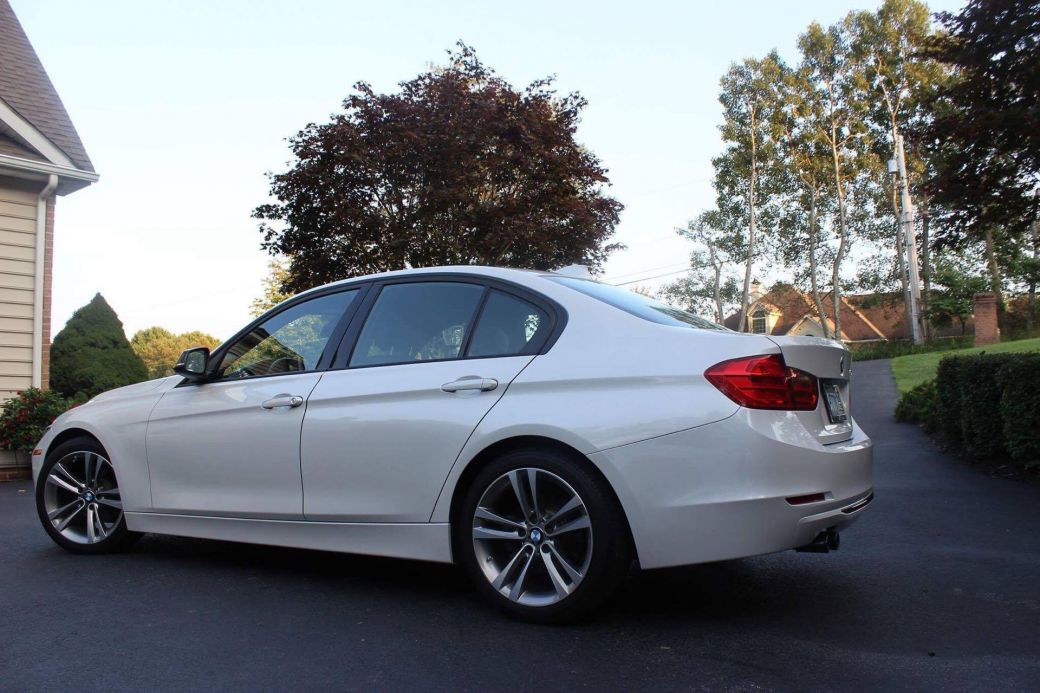

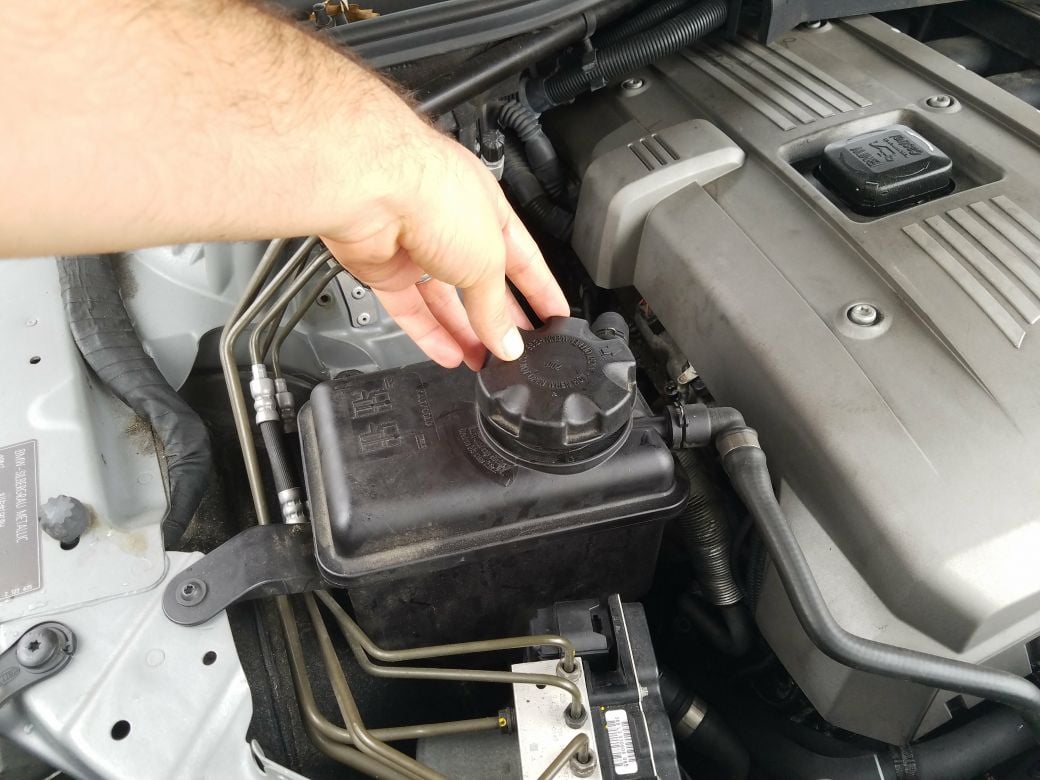
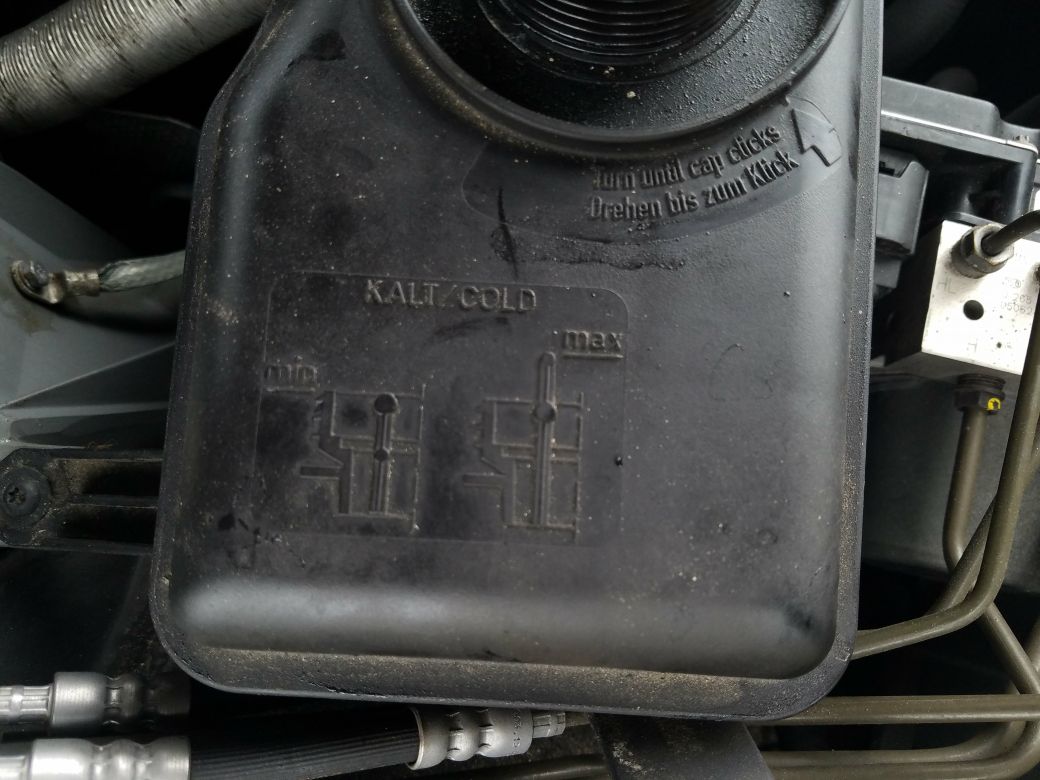






Hello, regarding the section below, I cannot see the floating coolant dipstick and have not removed or broken it myself. What would cause it to break? I have noticed on rare occasion a small drop of coolant on my garage floor. Is there a way to top-off the coolant without the dipstick indicator? What would the consequences of putting too much coolant into the system?
“When I check the coolant level, my BMW does not have a floating dipstick.
The coolant level may be shallow, causing the float to be much lower than the min. In this case, it may be hard to see the float. Use a flashlight to look inside the coolant reservoir. If the float device is not present, it may be removed or broken.”
outdated info , all newer BMW have (2 )Two caps , so whats the deal?
Just wanted to note that if you want to do an actual venting using the water pump:
– Insert the key into the dash slot, hit the starter button (but don’t start the engine – e.g. keep your foot off the bake/clutch)
-or if you don’t have start button turn key to position 2
– Turn off accessories to save battery or put a battery tender on
– Set the heater to the highest temp and set the fan on low
– Hold down the accelerator pedal (right down to kick down point) for at least 10-15 seconds, you should hear the water pump start
– The water pump will run for 12 minutes, after which time open the reservoir cap and recheck the level, refill as necessary
– You might want to run this twice, if so I’d suggest putting the battery on a tender.
Pete I know it has been a while but what happened is that the car overheated. The high pressure in the cooling system caused the coolant to overflow and spill as you describe. I would top it off for now which I assume that you have already done. But keep an eye becasue you will most likely have the issue come up again. The normal operating engine temperature is in a range of 200 to 220 degrees Fahrenheit.
If the engine is hot 215 degrees and the car is turned off, is it likely the antifreeze resivour purged a cup onto the ground through an overflow? Since the fluid questionable purged the low coolant light had come on… 2008 650i
What is the optimum or maximum engine running temperature for this 8 cylinder BMW?